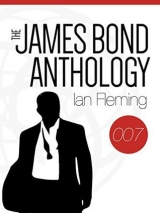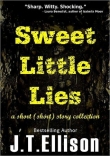
Текст книги "The James Bond Anthology"
Автор книги: Ian Fleming
Жанр:
Шпионские детективы
сообщить о нарушении
Текущая страница: 187 (всего у книги 190 страниц)
‘Hm.’ M.’s mouth turned down at the corners. ‘Expensive hunk of jewellery.’
Dr Fanshawe was aghast at this bare-faced revelation of M.’s philistinism. He actually looked M. straight in the face. ‘My dear sir,’ he expostulated, ‘do you consider the stolen Goya, sold at Sotheby’s for £140,000, that went to the National Gallery, just an expensive hunk, as you put it, of canvas and paint?’
M. said placatingly, ‘Forgive me, Dr Fanshawe. I expressed myself clumsily. I have never had the leisure to interest myself in works of art nor, on a naval officer’s pay, the money to acquire any. I was just registering my dismay at the runaway prices being fetched at auction these days.’
‘You are entitled to your views, sir,’ said Dr Fanshawe stuffily.
Bond thought it was time to rescue M. He also wanted to get Dr Fanshawe out of the room so that they could get down to the professional aspects of this odd business. He got to his feet. He said to M., ‘Well, sir, I don’t think there is anything else I need to know. No doubt this will turn out to be perfectly straightforward (like hell it would!) and just a matter of one of your staff turning out to be a very lucky woman. But it’s very kind of Dr Fanshawe to have gone to so much trouble.’ He turned to Dr Fanshawe. ‘Would you care to have a staff car to take you wherever you’re going?’
‘No thank you, thank you very much. It will be pleasant to walk across the park.’
Hands were shaken, goodbyes said and Bond showed the doctor out. Bond came back into the room. M. had taken a bulky file, stamped with the top secret red star, out of a drawer and was already immersed in it. Bond took his seat again and waited. The room was silent save for the riffling of paper. This also stopped as M. extracted a foolscap sheet of blue cardboard used for Confidential Staff Records and carefully read through the forest of close type on both sides.
Finally he slipped it back in the file and looked up. ‘Yes,’ he said and the blue eyes were bright with interest. ‘It fits all right. The girl was born in Paris in 1935. Mother very active in the Resistance during the war. Helped run the Tulip Escape Route and got away with it. After the war, the girl went to the Sorbonne and then got a job in the Embassy, in the Naval Attaché’s office, as an interpreter. You know the rest. She was compromised – some unattractive sexual business – by some of her mother’s old Resistance friends who by then were working for the N.K.V.D., and from then on she has been working under Control. She applied, no doubt on instruction, for British citizenship. Her clearance from the Embassy and her mother’s Resistance record helped her to get that by 1959, and she was then recommended to us by the F.O. But it was there that she made her big mistake. She asked for a year’s leave before coming to us and was next reported by the Hutchinson network in the Leningrad espionage school. There she presumably received the usual training and we had to decide what to do about her. Section 100 thought up the Purple Cipher operation and you know the rest. She’s been working for three years inside headquarters for the K.G.B. and now she’s getting her reward – this emerald ball thing worth £100,000. And that’s interesting on two counts. First it means that the K.G.B. is totally hooked on the Purple Cipher or they wouldn’t be making this fantastic payment. That’s good news. It means that we can hot up the material we’re passing over – put across some Grade 3 deception material and perhaps even move up to Grade 2. Secondly, it explains something we’ve never been able to understand – that this girl hasn’t hitherto received a single payment for her services. We were worried by that. She had an account at Glyn, Mills that only registered her monthly pay cheque of around £50. And she’s consistently lived within it. Now she’s getting her pay-off in one large lump sum via this bauble we’ve been learning about. All very satisfactory.’
M. reached for the ashtray made out of a twelve-inch shell base and rapped out his pipe with the air of a man who has done a good afternoon’s work.
Bond shifted in his chair. He badly needed a cigarette, but he wouldn’t have dreamed of lighting one. He wanted one to help him focus his thoughts. He felt that there were some ragged edges to this problem – one particularly. He said, mildly, ‘Have we ever caught up with her local Control, sir? How does she get her instructions?’
‘Doesn’t need to,’ said M. impatiently, busying himself with his pipe. ‘Once she’d got hold of the Purple Cipher all she needed to do was hold down her job. Damn it man, she’s pouring the stuff into their lap six times a day. What sort of instructions would they need to give her? I doubt if the K.G.B. men in London even know of her existence – perhaps the Resident Director does, but as you know we don’t even know who he is. Give my eyes to find out.’
Bond suddenly had a flash of intuition. It was as if a camera had started grinding in his skull, grinding out a length of clear film. He said quietly, ‘It might be that this business at Sotheby’s could show him to us – show us who he is.’
‘What the devil are you talking about, 007? Explain yourself.’
‘Well, sir,’ Bond’s voice was calm with certainty, ‘you remember what this Dr Fanshawe said about an underbidder – someone to make these Wartski merchants go to their very top price. If the Russians don’t seem to know or care very much about Fabergé as Dr Fanshawe says, they may have no very clear idea what this thing’s really worth. The K.G.B. wouldn’t be likely to know about such things anyway. They may imagine it’s only worth its breakup value – say ten or twenty thousand pounds for the emerald. That sort of sum would make more sense than the small fortune the girl’s going to get if Dr Fanshawe’s right. Well, if the Resident Director is the only man who knows about this girl, he will be the only man who knows she’s been paid. So he’ll be the underbidder. He’ll be sent to Sotheby’s and told to push the sale through the roof. I’m certain of it. So we’ll be able to identify him and we’ll have enough on him to have him sent home. He just won’t know what’s hit him. Nor will the K.G.B. If I can go to the sale and bowl him out and we’ve got the place covered with cameras, and the auction records, we can get the F.O. to declare him persona non grata inside a week. And Resident Directors don’t grow on trees. It may be months before the K.G.B. can appoint a replacement.’
M. said, thoughtfully, ‘Perhaps you’ve got something there.’ He swivelled his chair round and gazed out of the big window towards the jagged skyline of London. Finally he said, over his shoulder, ‘All right, 007. Go and see the Chief of Staff and set the machinery up. I’ll square things with Five. It’s their territory, but it’s our bird. There won’t be any trouble. But don’t go and get carried away and bid for this bit of rubbish yourself. I haven’t got the money to spare.’
Bond said, ‘No, sir.’ He got to his feet and went quickly out of the room. He thought he had been very clever and he wanted to see if he had. He didn’t want M. to change his mind.
Wartski has a modest, ultra-modern frontage at 138 Regent Street. The window, with a restrained show of modern and antique jewellery, gave no hint that these were the greatest Fabergé-dealers in the world. The interior – grey carpet, walls panelled in sycamore, a few unpretentious vitrines – held none of the excitement of Cartier’s, Boucheron or Van Cleef, but the group of framed Royal Warrants from Queen Mary, the Queen Mother, the Queen, King Paul of Greece and the unlikely King Frederick IX of Denmark, suggested that this was no ordinary jeweller. James Bond asked for Mr Kenneth Snowman. A good-looking, very well-dressed man of about forty rose from a group of men sitting with their heads together at the back of the room and came forward.
Bond said quietly, ‘I’m from the C.I.D. Can we have a talk? Perhaps you’d like to check my credentials first. My name’s James Bond. But you’ll have to go direct to Sir Ronald Vallance or his P.A. I’m not directly on the strength at Scotland Yard. Sort of liaison job.’
The intelligent, observant eyes didn’t appear even to look him over. The man smiled. ‘Come on downstairs. Just having a talk with some American friends – sort of correspondents really. From “Old Russia” on Fifth Avenue.’
‘I know the place,’ said Bond. ‘Full of rich-looking icons and so on. Not far from the Pierre.’
‘That’s right.’ Mr Snowman seemed even more reassured. He led the way down a narrow, thickly carpeted stairway into a large and glittering showroom which was obviously the real treasure house of the shop. Gold and diamonds and cut stones winked from lit cases round the walls.
‘Have a seat. Cigarette?’
Bond took one of his own. ‘It’s about this Fabergé piece that’s coming up at Sotheby’s tomorrow – this Emerald Sphere.’
‘Ah, yes.’ Mr Snowman’s clear brow furrowed anxiously. ‘No trouble about it I hope?’
‘Not from your point of view. But we’re very interested in the actual sale. We know about the owner, Miss Freudenstein. We think there may be an attempt to raise the bidding artificially. We’re interested in the underbidder – assuming, that is, that your firm will be leading the field, so to speak.’
‘Well, er, yes,’ said Mr Snowman with rather careful candour. ‘We’re certainly going to go after it. But it’ll sell for a huge price. Between you and me, we believe the V and A are going to bid, and probably the Metropolitan. But is it some crook you’re after? If so you needn’t worry. This is out of their class.’
Bond said, ‘No. We’re not looking for a crook.’ He wondered how far to go with this man. Because people are very careful with the secrets of their own business doesn’t mean that they’ll be careful with the secrets of yours. Bond picked up a wood and ivory plaque that lay on the table. It said:
It is naught, it is naught, saith the buyer.
But when he is gone his way, he boasteth.
–Proverbs XX, 14
Bond was amused. He said so. ‘You can read the whole history of the bazaar, of the dealer and the customer, behind that quotation,’ he said. He looked Mr Snowman straight in the eyes. ‘I need that sort of nose, that sort of intuition in this case. Will you give me a hand?’
‘Certainly. If you’ll tell me how I can help.’ He waved a hand. ‘If it’s secrets you’re worried about, please don’t worry. Jewellers are used to them. Scotland Yard will probably give my firm a clean bill in that respect. Heaven knows we’ve had enough to do with them over the years.’
‘And if I told you that I’m from the Ministry of Defence?’
‘Same thing,’ said Mr Snowman. ‘You can naturally rely absolutely on my discretion!’
Bond made up his mind. ‘All right. Well, all this comes under the Official Secrets Act, of course. We suspect that the underbidder, presumably to you, will be a Soviet agent. My job is to establish his identity. Can’t tell you any more, I’m afraid. And you don’t actually need to know any more. All I want is to go with you to Sotheby’s tomorrow night and for you to help me spot the man. No medals, I’m afraid, but we’d be extremely grateful.’
Mr Kenneth Snowman’s eyes glinted with enthusiasm. ‘Of course. Delighted to help in any way. But,’ he looked doubtful, ‘you know it’s not necessarily going to be all that easy. Peter Wilson, the head of Sotheby’s, who’ll be taking the sale, would be the only person who could tell us for sure – that is, if the bidder wants to stay secret. There are dozens of ways of bidding without making any movement at all. But if the bidder fixes his method, his code so to speak, with Peter Wilson before the sale, Peter wouldn’t think of letting anyone in on the code. It would give the bidder’s game away to reveal his limit. And that’s a close secret, as you can imagine, in the rooms. And a thousand times not if you come with me. I shall probably be setting the pace. I already know how far I’m going to go – for a client by the way – but it would make my job vastly easier if I could tell how far the underbidder’s going to go. As it is, what you’ve told me has been a great help. I shall warn my man to put his sights even higher. If this chap of yours has got a strong nerve, he may push me very hard indeed. And there will be others in the field of course. It sounds as if this is going to be quite a night. They’re putting it on television and asking all the millionaires and dukes and duchesses for the sort of gala performance Sotheby’s do rather well. Wonderful publicity of course. By jove, if they knew there was cloak-and-dagger stuff mixed up with the sale, there’d be a riot! Now then, is there anything else to go into? Just spot this man and that’s all?’
‘That’s all. How much do you think this thing will go for?’
Mr Snowman tapped his teeth with a gold pencil. ‘Well now, you see that’s where I have to keep quiet. I know how high I’m going to go, but that’s my client’s secret.’ He paused and looked thoughtful, ‘Let’s say that if it goes for less than £100,000 we’ll be surprised.’
‘I see,’ said Bond. ‘Now then, how do I get into the sale?’
Mr Snowman produced an elegant alligator-skin notecase and extracted two engraved bits of paste-board. He handed one over. ‘That’s my wife’s. I’ll get her one somewhere else in the rooms. B5 – well placed in the centre front. I’m B6.’ Bond took the ticket. It said:
Sotheby & Co.
Sale of
A Casket of Magnificent Jewels
and
A Unique Object of Vertu by Carl Fabergé
The Property of a Lady
Admit one to the Main Sale Room
Tuesday, 20 June, at 9.30 p.m. precisely
ENTRANCE IN ST GEORGE STREET
‘It’s not the old Georgian entrance in Bond Street,’ commented Mr Snowman. ‘They have an awning and red carpet out from their back door now that Bond Street’s one-way. Now,’ he got up from his chair, ‘would you care to see some Fabergé? We’ve got some pieces here my father bought from the Kremlin around 1927. It’ll give you some idea what all the fuss is about, though of course the Emerald Sphere’s incomparably finer than anything I can show you by Fabergé apart from the Imperial Easter Eggs.’
Later, dazzled by the diamonds, the multi-coloured gold, the silken sheen of translucent enamels, James Bond walked up and out of the Aladdin’s Cave under Regent Street and went off to spend the rest of the day in drab offices around Whitehall planning drearily minute arrangements for the identification and photographing of a man in a crowded room who did not yet possess a face or an identity but who was certainly the top Soviet spy in London.
Through the next day, Bond’s excitement mounted. He found an excuse to go into the Communications Section and wander into the little room where Miss Maria Freudenstein and two assistants were working the cipher machines that handled the Purple Cipher dispatches. He picked up an en clair file – he had freedom of access to most material at headquarters – and ran his eye down the carefully edited paragraphs that, in half an hour or so, would be spiked, unread, by some junior C.I.A. clerk in Washington and, in Moscow, be handed, with reverence, to a top-ranking officer of the K.G.B. He joked with the two junior girls, but Maria Freudenstein only looked up from her machine to give him a polite smile and Bond’s skin crawled minutely at this proximity to treachery and at the black and deadly secret locked up beneath the frilly white blouse. She was an unattractive girl with a pale, rather pimply skin, black hair and a vaguely unwashed appearance. Such a girl would be unloved, make few friends, have chips on her shoulder – more particularly in view of her illegitimacy – and a grouse against society. Perhaps her only pleasure in life was the triumphant secret she harboured in that flattish bosom – the knowledge that she was cleverer than all those around her, that she was, every day, hitting back against the world – the world that despised, or just ignored her, because of her plainness – with all her might. One day they’d be sorry! It was a common neurotic pattern – the revenge of the ugly duckling on society.
Bond wandered off down the corridor to his own office. By tonight that girl would have made a fortune, been paid her thirty pieces of silver a thousandfold. Perhaps the money would change her character, bring her happiness. She would be able to afford the best beauty specialists, the best clothes, a pretty flat. But M. had said he was now going to hot up the Purple Cipher Operation, try a more dangerous level of deception. This would be dicey work. One false step, one incautious lie, an ascertainable falsehood in a message, and K.G.B. would smell a rat. One more, and they would know they were being hoaxed and probably had been ignominiously hoaxed for three years. Such a shameful revelation would bring quick revenge. It would be assumed that Maria Freudenstein had been acting as a double agent, working for the British as well as the Russians. She would inevitably and quickly be liquidated – perhaps with a cyanide pistol Bond had been reading about only the day before.
James Bond, looking out of the window across the trees in Regent’s Park, shrugged. Thank God it was none of his business. The girl’s fate wasn’t in his hands. She was caught in the grimy machine of espionage and she would be lucky if she lived to spend a tenth of the fortune she was going to gain in a few hours in the auction rooms.
There was a line of cars and taxis blocking George Street behind Sotheby’s. Bond paid off his taxi and joined the crowd filtering under the awning and up the steps. He was handed a catalogue by the uniformed commissionaire who inspected his ticket, and went up the broad stairs with the fashionable, excited crowd and along a gallery and into the main auction room that was already thronged. He found his seat next to Mr Snowman, who was writing figures on a pad on his knee, and looked round him.
The lofty room was perhaps as large as a tennis court. It had the look and the smell of age and the two large chandeliers, to fit in with the period, blazed warmly in contrast to the strip lighting along the vaulted ceiling whose glass roof was partly obscured by a blind, still half-drawn against the sun that would have been blazing down on the afternoon’s sale. Miscellaneous pictures and tapestries hung on the olive green walls and batteries of television and other cameras (amongst them the M.I.5 cameraman with a press pass from the Sunday Times) were clustered with their handlers on a platform built out from the middle of a giant tapestried hunting scene. There were perhaps a hundred dealers and spectators sitting attentively on small gilt chairs. All eyes were focused on the slim, good-looking auctioneer talking quietly from the raised wooden pulpit. He was dressed in an immaculate dinner jacket with a red carnation in the buttonhole. He spoke unemphatically and without gestures.
‘Fifteen thousand pounds. And sixteen,’ a pause. A glance at someone in the front row. ‘Against you, sir.’ The flick of a catalogue being raised. ‘Seventeen thousand pounds I am bid. Eighteen. Nineteen. I am bid twenty thousand pounds.’ And so the quiet voice went, calmly, unhurriedly on while down among the audience the equally impassive bidders signalled their responses to the litany.
‘What is he selling?’ asked Bond, opening his catalogue.
‘Lot 40,’ said Mr Snowman. ‘That diamond rivière the porter’s holding on the black velvet tray. It’ll probably go for about twenty-five. An Italian is bidding against a couple of Frenchmen. Otherwise they’d have got it for twenty. I only went to fifteen. Liked to have got it. Wonderful stones. But there it is.’
Sure enough, the price stuck at twenty-five thousand and the hammer, held by its head and not by its handle, came down with soft authority. ‘Yours, sir,’ said Mr Peter Wilson and a sales clerk hurried down the aisle to confirm the identity of the bidder.
‘I’m disappointed,’ said Bond.
Mr Snowman looked up from his catalogue, ‘Why is that?’
‘I’ve never been to an auction before and I always thought the auctioneer banged his gavel three times and said going, going, gone, so as to give the bidders a last chance.’
Mr Snowman laughed. ‘You might still find that operating in the Shires or in Ireland, but it hasn’t been the fashion at London sale rooms since I’ve been attending them.’
‘Pity. It adds to the drama.’
‘You’ll get plenty of that in a minute. This is the last lot before the curtain goes up.’
One of the porters had reverently uncoiled a glittering mass of rubies and diamonds on his black velvet tray. Bond looked at the catalogue. It said ‘Lot 41’ which the luscious prose described as:
A PAIR OF FINE AND IMPORTANT RUBY AND DIAMOND BRACELETS, the front of each in the form of an elliptical cluster composed of one larger and two smaller rubies within a border of cushion-shaped diamonds, the sides and back formed of simpler clusters alternating with diamond openwork scroll motifs springing from single-stone ruby centres millegriffe-set in gold, running between chains of rubies and diamonds linked alternately, the clasp also in the form of an elliptical cluster.
* According to family tradition, this lot was formerly the property of Mrs Fitzherbert (1756–1837) whose marriage to the Prince of Wales afterwards Geo. IV was definitely established when in 1905 a sealed packet deposited at Coutts Bank in 1833 and opened by Royal permission disclosed the marriage certificate and other conclusive proofs. These bracelets were probably given by Mrs Fitzherbert to her niece, who was described by the Duke of Orleans as ‘the prettiest girl in England’.
While the bidding progressed, Bond slipped out of his seat and went down the aisle to the back of the room where the overflow audience spread out into the New Gallery and the Entrance Hall to watch the sale on closed-circuit television. He casually inspected the crowd, seeking any face he could recognize from the 200 members of the Soviet embassy staff whose photographs, clandestinely obtained, he had been studying during the past days. But amidst an audience that defied classification – a mixture of dealers, amateur collectors and what could be broadly classified as rich pleasure-seekers – was not a feature, let alone a face, that he could recognize except from the gossip columns. One or two sallow faces might have been Russian, but equally they might have belonged to half a dozen European races. There was a scattering of dark glasses, but dark glasses are no longer a disguise. Bond went back to his seat. Presumably the man would have to divulge himself when the bidding began.
‘Fourteen thousand I am bid. And fifteen. Fifteen thousand.’ The hammer came down. ‘Yours, sir.’
There was a hum of excitement and a fluttering of catalogues. Mr Snowman wiped his forehead with a white silk handkerchief. He turned to Bond, ‘Now I’m afraid you are more or less on your own. I’ve got to pay attention to the bidding and anyway for some unknown reason it’s considered bad form to look over one’s shoulder to see who’s bidding against you – if you’re in the trade that’s to say – so I’ll only be able to spot him if he’s somewhere up front here, and I’m afraid that’s unlikely. Pretty well all dealers, but you can stare around as much as you like. What you’ve got to do is to watch Peter Wilson’s eyes and then try and see who he’s looking at, or who’s looking at him. If you can spot the man, which may be quite difficult, note any movement he makes, even the very smallest. Whatever the man does – scratching his head, pulling at the lobe of his ear or whatever, will be a code he’s arranged with Peter Wilson. I’m afraid he won’t do anything obvious like raising his catalogue. Do you get me? And don’t forget that he may make absolutely no movement at all until right at the end when he’s pushed me as far as he thinks I’ll go, then he’ll want to sign off. Mark you,’ Mr Snowman smiled, ‘when we get to the last lap I’ll put plenty of heat on him and try and make him show his hand. That’s assuming of course that we are the only two bidders left in.’ He looked enigmatic. ‘And I think you can take it that we shall be.’
From the man’s certainty, James Bond felt pretty sure that Mr Snowman had been given instructions to get the Emerald Sphere at any cost.
A sudden hush fell as a tall pedestal draped in black velvet was brought in with ceremony and positioned in front of the auctioneer’s rostrum. Then a handsome oval case of what looked like white velvet was placed on top of the pedestal and, with reverence, an elderly porter in grey uniform with wine red sleeves, collar and back belt, unlocked it and lifted out Lot 42, placed it on the black velvet and removed the case. The cricket ball of polished emerald on its exquisite base glowed with a supernatural green fire and the jewels on its surface and on the opalescent meridian winked their various colours. There was a gasp of admiration from the audience and even the clerks and experts behind the rostrum and sitting at the tall counting-house desk beside the auctioneer, accustomed to the Crown jewels of Europe parading before their eyes, leaned forward to get a better look.
James Bond turned to his catalogue. There it was, in heavy type and in prose as stickily luscious as a butterscotch sundae:
THE TERRESTRIAL GLOBE DESIGNED IN 1917 BY CARL FABERGÉ FOR A RUSSIAN GENTLEMAN AND NOW THE PROPERTY OF HIS GRANDDAUGHTER 42 A VERY IMPORTANT FABERGÉ TERRESTRIAL GLOBE.
A sphere carved from an extraordinarily large piece of Siberian emerald matrix weighing approximately one thousand three hundred carats and of a superb colour and vivid translucence, represents a terrestrial globe supported upon an elaborate
rocaille
scroll mount finely chased in
quatre-couleur
gold and set with a profusion of rose-diamonds and small emeralds of intense colour, to form a table-clock.
Around this mount six gold
putti
disport themselves among cloud-forms which are naturalistically rendered in carved rock-crystal finished matt and veined with fine lines of tiny rose-diamonds.
The Globe itself, the surface of which is meticulously engraved with a map of the world with the principal cities indicated by brilliant diamonds embedded within gold collets, rotates mechanically on an axis controlled by a small clock-movement, by
G. Moser
, signed, which is concealed in the base, and is girdled by a fixed gold belt enamelled opalescent oyster along a reserved path in
champlevé
technique over a moiré
guillochage
with painted Roman numerals in pale sepia enamel serving as the dial of the clock, and a single triangular pigeon-blood Burma ruby of about five carats set into the surface of the orb, pointing the hour.
Height: 7½ in.
Workmaster, Henrik Wigström
. In the original double-opening white velvet, satin-lined, oviform case with the gold key fitted in the base.
* The theme of this magnificent sphere is one that had inspired Fabergé some fifteen years earlier, as evidenced in the miniature terrestrial globe which forms part of the Royal Collection at Sandringham. (See plate 280 in
The Art of Carl Fabergé,
by A. Kenneth Snowman.)
After a brief and searching glance round the room, Mr Wilson banged his hammer softly. ‘Lot 42 – an object of vertu by Carl Fabergé.’ A pause. ‘Twenty thousand pounds I am bid.’
Mr Snowman whispered to Bond, ‘That means he’s probably got a bid of at least fifty. This is simply to get things moving.’
Catalogues fluttered. ‘And thirty, forty, fifty thousand pounds I am bid. And sixty, seventy, and eighty thousand pounds. And ninety.’ A pause and then: ‘One hundred thousand pounds I am bid.’
There was a rattle of applause round the room. The cameras had swivelled to a youngish man, one of three on a raised platform to the left of the auctioneer who were speaking softly into telephones. Mr Snowman commented, ‘That’s one of Sotheby’s young men. He’ll be on an open line to America. I should think that’s the Metropolitan bidding, but it might be anybody. Now it’s time for me to get to work.’ Mr Snowman flicked up his rolled catalogue.
‘And ten,’ said the auctioneer. The man spoke into his telephone and nodded. ‘And twenty.’
Again a flick from Mr Snowman.
‘And thirty.’
The man on the telephone seemed to be speaking rather more words than before into his mouthpiece – perhaps giving his estimate of how much further the price was likely to go. He gave a slight shake of his head in the direction of the auctioneer and Peter Wilson looked away from him and round the room.
‘One hundred and thirty thousand pounds I am bid,’ he repeated quietly.
Mr Snowman said, softly, to Bond, ‘Now you’d better watch out. America seems to have signed off. It’s time for your man to start pushing me.’
James Bond slid out of his place and went and stood amongst a group of reporters in a corner to the left of the rostrum. Peter Wilson’s eyes were directed towards the far right-hand corner of the room. Bond could detect no movement, but the auctioneer announced, ‘And forty thousand pounds.’ He looked down at Mr Snowman. After a long pause Mr Snowman raised five fingers. Bond guessed that this was part of his process of putting the heat on. He was showing reluctance, hinting that he was near the end of his tether.
‘One hundred and forty-five thousand.’ Again the piercing glance towards the back of the room. Again no movement. But again some signal had been exchanged. ‘One hundred and fifty thousand pounds.’
There was a buzz of comment and some desultory clapping. This time Mr Snowman’s reaction was even slower and the auctioneer twice repeated the last bid. Finally he looked directly at Mr Snowman. ‘Against you, sir.’ At last Mr Snowman raised five fingers.
‘One hundred and fifty-five thousand pounds.’
James Bond was beginning to sweat. He had got absolutely nowhere and the bidding must surely be coming to an end. The auctioneer repeated the bid.
And now there was the tiniest movement. At the back of the room, a chunky-looking man in a dark suit reached up and unobtrusively took off his dark glasses. It was a smooth, nondescript face – the sort of face that might belong to a bank manager, a member of Lloyd’s, or a doctor. This must have been the prearranged code with the auctioneer. So long as the man wore his dark glasses he would raise in tens of thousands. When he took them off, he had quit.








